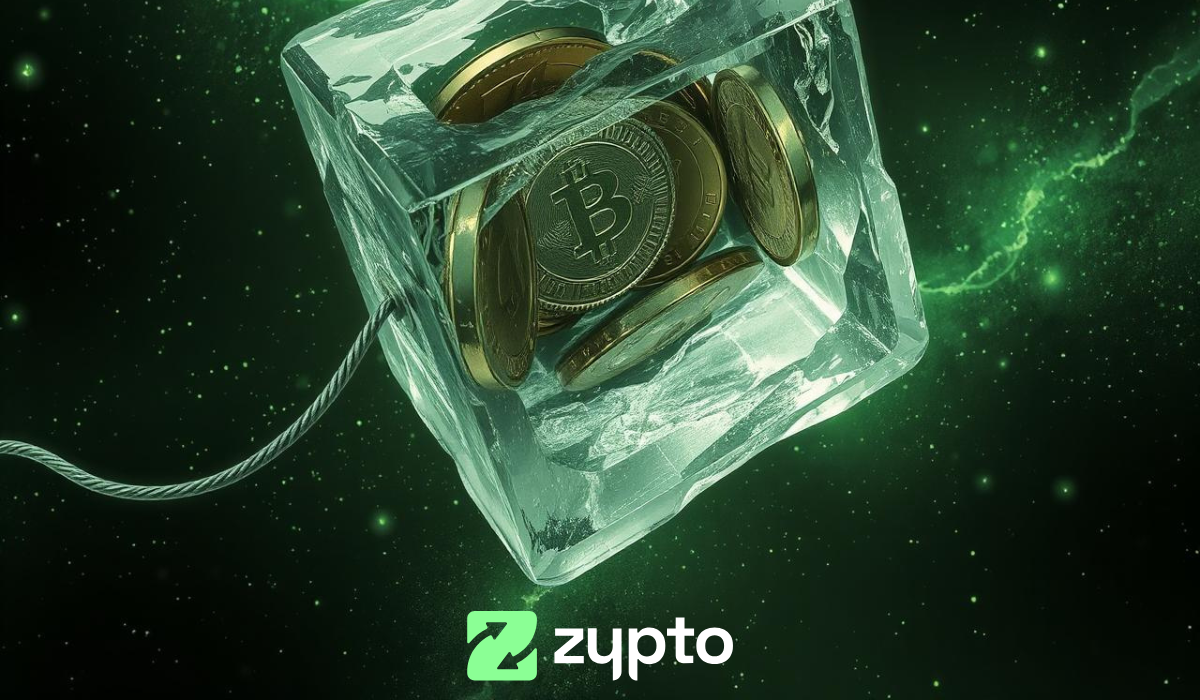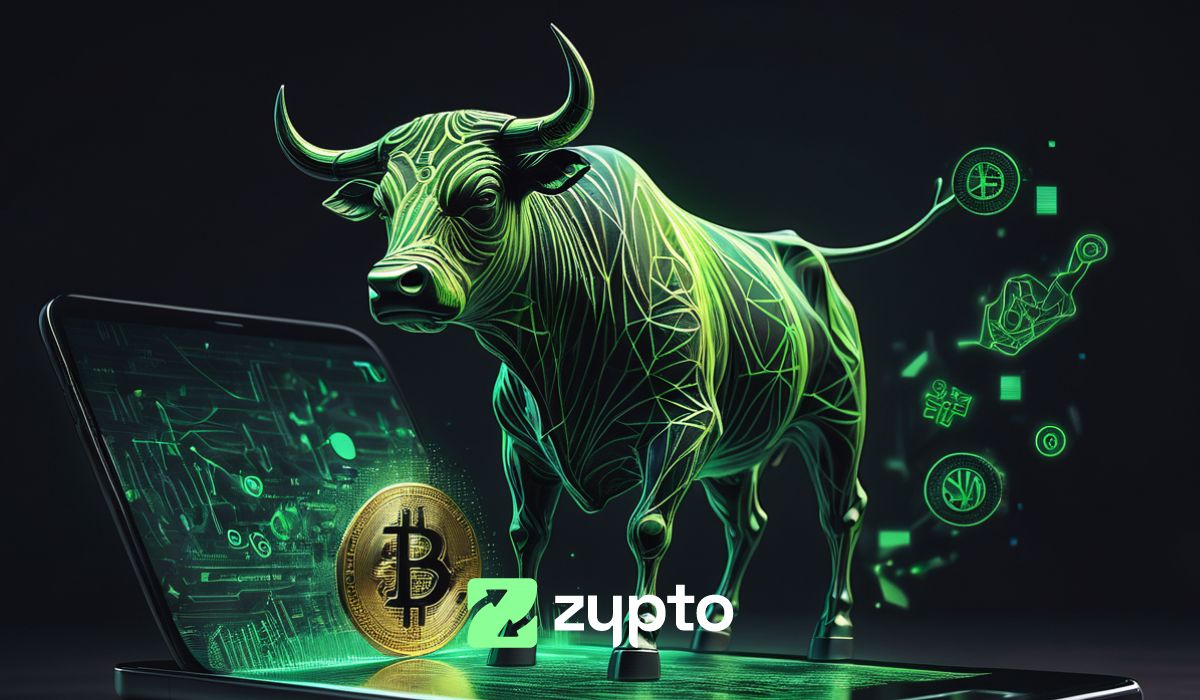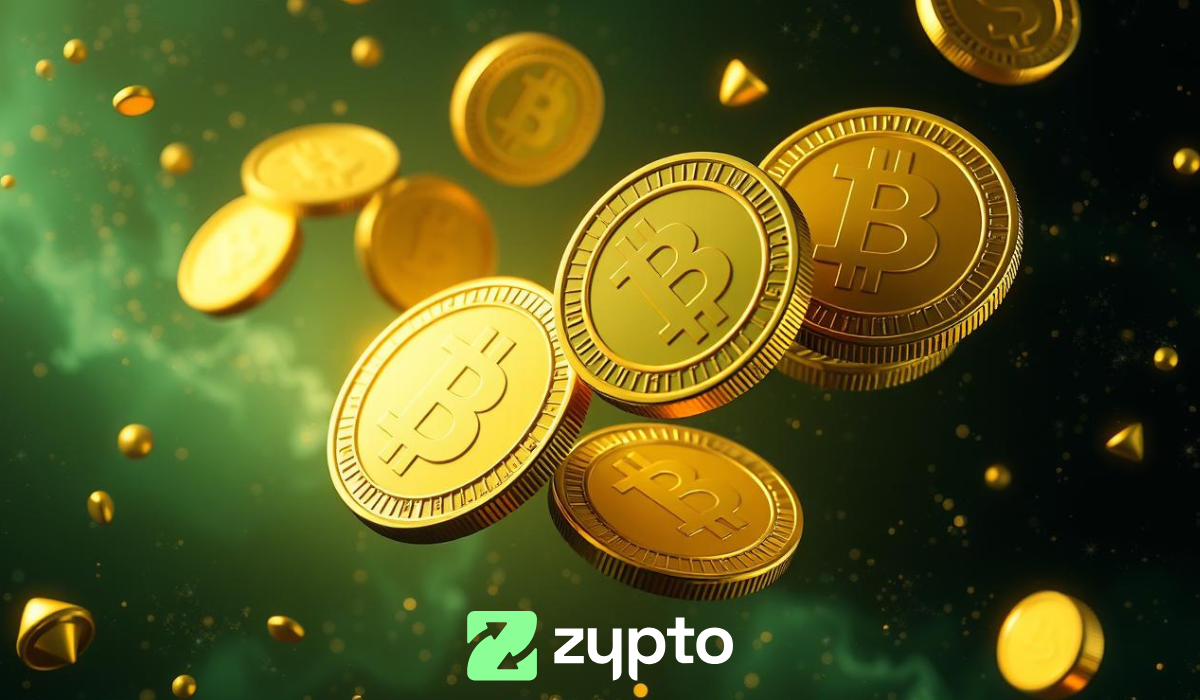If you’re hoping to explore the crypto world, an in-depth knowledge of the differences between a crypto coin and tokens is a must-have. Although often used interchangeably, crypto coins and tokens differ in terms of origin, use cases, and technological structure.
Speaking of origin, for example, a coin is native to its Layer-1 blockchain, whereas tokens are created on top of the existing blockchain. BTC is the native coin of the Bitcoin network. This further means that the coin can only operate on the Bitcoin blockchain, unlike tokens.
Understanding this one bit can make a whole difference in your crypto investment journey. But, there’s much more under the hood, so let’s explore cryptocurrency coins vs tokens.
Cryptocurrency Coins vs Tokens: What’s the difference?
Coins and tokens play a significant role in the crypto ecosystem as digital assets. They both serve as a store of value and medium for monetary transfer using blockchain technology. But that’s mainly where the similarities end.
Basically, cryptocurrency coins are the native currencies of specific blockchains. For example, BTC is the native coin of the Bitcoin Network. ETH is the native coin of the Ethereum Network. These coins provide the necessary basis for a network’s security model. They’re issued to the network participants as a reward for keeping the network secure.
Tokens, on the other hand, do not have an independent blockchain, but rather are supported by an existing blockchain. They also have a wider user case than coins.
Coins and tokens possess differences that make them uniquely fitted for certain use cases. Let’s explore these differences by taking a deeper look at each asset.

What is a Cryptocurrency Coin?
Any cryptocurrency that is powered by and operates on its own blockchain is called a coin. Crypto coins have their standalone, independent blockchain, just like the notable Bitcoin and Ethereum. This is one basic characteristic to note.
Operating on an independent blockchain allows for the creation of new functions and offers unique technical solutions. The robustness, efficiency, and security of the underlying blockchain technology are key factors that influence the coin’s intrinsic value.
Coins essentially function as a medium of exchange on the network. They are usually considered digital money since they possess the attributes of traditional currencies: a store of value, scarcity, security, durability, and portability. Bitcoin already operates as a medium of exchange and is accepted by notable companies such as PayPal, Microsoft, and Starbucks.
While crypto coins and tokens are based on blockchain technology, there are technical differences in how they are created – proof of work (PoW) and proof of stake (PoS). On a proof-of-work network, coins are created by a process called mining. Network participants (miners) are considered the guardians and facilitators that make for the smooth-running and accuracy of the blockchain system.
Miners have the responsibility of validating transactions on the network and securing the network. Each time they do this, they are rewarded with new crypto coins as proof of their work.
Bitcoin, for example, is a proof-of-work network. On the Bitcoin network, miners produce a block every 10 minutes, and the current reward is about 6.25 BTC per block. This reward serves as an incentive for miners to remain transparent in their propagation of blocks.
The proof of stake, as a mechanism for validating cryptocurrency transactions, is an alternative to the proof of work. On a proof-of-stake network, validators pledge their coins to be used for verifying transactions. This is called crypto staking. Staked coins are locked up and used for checking the accuracy of transactions.
Once the validator confirms the accuracy of a transaction, they add the block to the blockchain and receive crypto rewards for their contribution; The larger the stake, the greater the potential rewards. Conversely, if they propose adding a block with inaccurate information, they lose part of their staked coins as a penalty.
Cardano’s ADA uses the proof of stake consensus mechanism. Network participants can stake their Cardano and set up their own validator node. When Cardano needs to verify blocks of transactions, its protocol selects a validator. The validator checks the block, adds it, and receives more Cardano as compensation. The popular Ethereum’s ETH also works with the proof of stake blockchain.
What is a Token?
One major difference between a cryptocurrency coin vs token is that tokens are issued/created on top of existing blockchains. In other words, cryptocurrency tokens are not native to the networks on which they exist. This further implies that a token and coin can exist on a network and a token can be used on several different blockchains.
For example, Ethereum’s native coin is ETH. However, the network supports a large number of tokens. Multiple currencies and assets operate on the Ethereum network that are not Ethereum’s native coin (ETH) and each of those assets is known as tokens. However, these Ethereum-based currencies follow a specific standard called the ERC standard.
The first token provided by the ERC standard was the ERC-20 token which enables users to create, issue, and manage currencies supported by Ethereum. Today, however, many other blockchains support fungible and non-fungible tokens.
Common examples of crypto tokens include Tether (USDT), USDC, and Uniswap (UNI). USDT is the largest stablecoin by market cap, and provides a way for investors to move into dollars while still within the crypto ecosystem.
Tokens can be created for a wide range of use cases other than serving as a means of payment. Many crypto startups use tokens to raise capital to fund projects. This is usually through an initial coin offering (ICO), the equivalent of an initial public offering in the equity world.
In ICO, tokens are issued to investors in exchange for their monetary investments. After the launch of the project, the tokens serve as their currency and provide customers with access to various features. Tokens can represent any coins or assets across blockchains, creating a more frictionless market.
The most common types of tokens are utility tokens, security tokens, and governance tokens. Each of these tokens has its characteristics and use cases.
Utility tokens
Utility tokens give their holders access to specialized products or services of a blockchain-based project. They’re often used to incentivize users to participate in the network by offering discounts or rewards for using the token to access the network’s services. Utility tokens are commonly issued through an initial coin offering (ICO) to help a company generate capital and reward investors for their contribution. They do not provide any form of ownership or investment stake in a project and as such, there are usually no expectations of profit. An example of a utility token is the Binance Coin, which is used to pay for trading fees on the Binance cryptocurrency exchange.
Security tokens
Security tokens represent fractions of assets that have real value such as equity, a company, real estate, etc. In essence, security tokens allow holders to have a stake in an asset, which entitles them to the profits of the asset; It’s more like owning the shares of a company. This token also represents a transfer of value or promise of returns that are tokenized on a blockchain. Security Token Offerings (STOs) follow regulations like Regulation D, A+, and S in the USA, strengthening investors’ trust and compliance.
Governance tokens
These tokens give users the right to vote on proposed changes to the underlying protocol. They incentivize community participation by giving users voting powers to decide the future direction of the crypto project. Some governance tokens also allow holders to take out loans or stake their tokens and earn money through yield farming.
Stable coins
Stablecoins are a type of digital asset whose value is pegged to another currency, financial instrument or commodity to maintain a stable price. The value of a stablecoin is mostly tied to fiat currency such as the US dollar. These coins are often used as a hedge against wild price swings in the crypto market, or for generating passive income through lending or staking.
Final Words
Although “coins” and “tokens” fall under the cryptocurrency umbrella term and are often used interchangeably, they refer to different concepts. What’s the difference? You can tell if a digital asset is a coin or token in a snap; Simply find out whether or not the cryptocurrency has a blockchain. If it has its own blockchain, then it’s a crypto coin, and if it runs on an existing blockchain, then it’s a token.
While you make your choice, also keep in mind that crypto coins basically serve as a means of payment. Tokens, on the other hand, have a variety of use cases and can serve other purposes aside from being a form of money. This offers utility to the network’s users, facilitating the network’s growth in terms of relevance and number of users. However, if you wouldn’t trade anything for security, coins may be a more suited option since they are vital to the security of a blockchain. They also tend to be less volatile than tokens.
Whatever the case, coins and tokens can not operate independently of each other. Each asset plays a vital role in the decentralized cryptocurrency ecosystem. While tokens offer potential interoperability, they can’t take the place of native coins. You may eventually need both to make the most of your crypto journey.
What’s your take on crypto coins vs tokens? Share your thoughts in the comments below and let’s keep the conversation going!

FAQs
What is the difference between a crypto coin and token?
A coin operates on its own blockchain and is often used as digital currency, while a token exists on another blockchain and can represent various assets or utilities.
Coins are generally used for transactions, while tokens can be used for specific functions within applications.
Is Ethereum a token or a coin?
Ethereum is a coin because it operates on its own blockchain and serves as a digital currency within its network. It facilitates transactions, smart contracts, and various decentralized applications.
Tokens, on the other hand, are built on Ethereum’s blockchain and have different uses and functionalities.
Which is better, a coin or a token?
The choice depends on the application; coins are typically better for currency and transactions, while tokens are suited for representing assets or accessing specific services.
Which has more value a token or a coin?
Generally, coins like Bitcoin and Ethereum have higher value due to their broader use and recognition, but some tokens can also be highly valuable depending on their application and demand.






























I’m a relative newcomer to the crypto space and this helped a lot with understanding some of the nuances. Can’t wait to read more and keep learning. Cryptocurrency is truly the future of finance with great companies like Zypto leading the way! Very well written.
I have been investing in crypto for 3 years and this is the clearest explanation that I’ve seen for the differences between crypto Coins and Tokens. Great post!
Zypto is clearly leading the way, not only in crypto payment solutions and DeFi / CeFi with Zypto App, but also in blog content. The information being published here on Zypto.com is hands down the best crypto education and information articles I’ve seen to date.
Superb article Kris. Thank you for this great info presented so clearly.
I’m not going to lie, it actually makes things clearer said like that.
A must read for anyone in the crypto industry or anyone planning to jump in the ship.
Great info as usual. Will be very helpful to Crypto beginners as the App releases and we start to see mainstream adoption.
Get ready for the Zypto Wallet launch—it’s not just an app; it’s a gateway to a cross chain decentralized future that is easy to use. Stay tuned 🚀
What strikes me the most is the circumstance, that Zypto (despite being an Ethereum Token) doesnt rely on a single token/coin/blockchain.
The Zypto Company and all the Token Holders and Product users can profit on all of them alike 🤩
The Volume counts – not the origin Coin, Token, Blockchain or its Utilization by physical or digital Credit Cards, Gift Cards, Swaps, Trades or Bill Payments.
By Zyptoapp and Zyptopay its possible to earn money in Bull or Bear market – cause Zypto is bringing Satoshis Dream of a mass-adopted Peer-to-Peer Payment Gateway to live, integrating all of Defi and bringing Utility to all Crypto Users ❤️
These blogs are great! A bit like “Cryptocurrency for Dummies” the difference between crypto coins and tokens was well explained. The crypto economy is only just getting started, with Zypto helping to bridge the gap between digital currency and FIAT, its bound to pave the way for crypto transactions to reach mass adoption.
Even the dreaded CBDC central bank cryptos use blockchain technology. Not sure if they will have cryptocurrency wallets though or what. ..
Can you elaborate more on the difference in fungible and non-fungible tokens, and the role that the latter plays in the crypto space?
Great reading material for people who just started in crypto. Anyway this is one of the basics every crypto investor, trader and new comer should understand and know. Perfect written! And btw Zypto is a Token, now you know WHY 😉
Both crypto coins and tokens have unique roles within the cryptocurrency ecosystem. Coins, with their own blockchains, provide a robust foundation for security and are ideal for transactions, often being less volatile. Tokens, on the other hand, offer diverse functionalities and utility, driving innovation and adoption within existing blockchain networks. Understanding the differences and uses of each can help investors and users make informed decisions and fully leverage the potential of the crypto space.
tldr;
In the realm of cryptocurrency, understanding the nuances between coins and tokens is crucial. Coins, such as Bitcoin and Ethereum, have their own blockchains, serving as native currencies and integral components of network security. Conversely, tokens are built on existing blockchains like Ethereum and offer a broader range of use cases beyond mere transactions. They’re utilized for ICO fundraising, governance, and more. Recognizing these distinctions empowers investors to make informed decisions and harness the full potential of the crypto landscape. Whether you’re drawn to the stability of coins or the versatility of tokens, both play pivotal roles in driving innovation and growth within the decentralized ecosystem.
Great article! Understanding the differences between crypto coins and tokens is crucial for anyone exploring the crypto world. Coins are native to their own blockchain, while tokens are created on top of existing blockchains. Coins serve as the base currency of a network and are used for transactions, while tokens have a wider range of use cases.
Coins, like BTC and ETH, operate on independent blockchains and provide the foundation for network security. They function as a medium of exchange and possess the attributes of traditional currencies. Tokens, on the other hand, are not native to the networks they exist on and can be used on multiple blockchains. They can represent various assets and are often created to raise capital for projects.
There are different types of tokens, including utility tokens, security tokens, governance tokens, and stablecoins. Utility tokens provide access to a project’s products or services, security tokens represent ownership in assets, governance tokens enable voting on protocol changes, and stablecoins maintain a stable value by being pegged to another currency.
It’s important to note that coins and tokens are both essential in the crypto ecosystem and serve different purposes. While coins are vital for network security and payments, tokens offer utility and flexibility. Ultimately, both coins and tokens have their place and can be beneficial for different investment strategies.